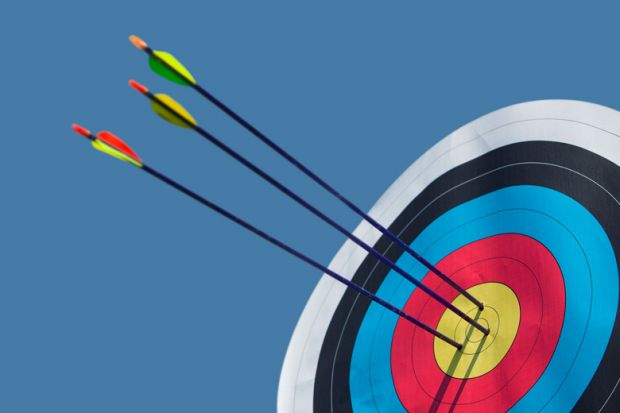Widening participation is a topic that is back on the agenda for Horizon Europe (HEU), the European Commission research funding programme set to run from 2021 to 2027. Following MEP Dan Nica’s demand that 4 per cent of the HEU budget be invested in measures to address the growing inequalities in research funding among member states, this issue has been placed high on the agenda for the European Council and the European Parliament.
Indeed, the gap exists: from 2014 to 2018, the so-called EU13 countries received 4.8 per cent of Horizon Europe funding, compared with 87 per cent for EU15 states in the same period. Is the solution to bridging the research and innovation divide simply about spending more money within Horizon, as Nica has proposed? To answer this question, we must examine the latest figures more closely.
To begin with, financial returns from Horizon 2020, the commission’s current funding programme, should not be the only way of calculating the benefit of Horizon, which also brings value through the quality of research that it supports.
In 2015-16, research funded by Horizon 2020 was almost four times (3.74) more likely to be among the world’s 1 per cent most-cited research output than the average EU28 publication output.
But when this figure is broken down between EU15 and EU13 countries, the latter benefited more (5.57 times more likely to be among the world’s top-cited publications) than the former (3.65 times more than the average).
All scientists benefit from EU funding, but scientists in EU13 countries – Bulgaria, Croatia, Cyprus, the Czech Republic, Estonia, Hungary, Latvia, Lithuania, Malta, Poland, Romania, Slovakia and Slovenia – do so particularly.
In terms of total funding per country, the 14 most successful recipients are from EU15 states. But EU15 countries also tend to be larger than EU13 member states.
When the sums received from Horizon Europe are measured per inhabitant, Cyprus (€73, about £65), Estonia (€50) and Slovenia (€53) are well above the average for EU15 member states (€44 per inhabitant), although many other EU13 countries are well below (Romania €4, Poland €5, Lithuania €7). There is clearly a significant divide within the EU13, one that closely correlates to national investment in research and innovation.
At the same time, with measures under the Spreading Excellence and Widening Participation programme, Horizon has created a targeted set of actions that can have a direct impact on EU13 participation, and it works.
In almost all EU13 countries, a significant share of funding comes through this instrument, including Estonia (20 per cent of all Horizon 2020 funding received), Slovakia (20 per cent) and Cyprus (almost 30 per cent). Increasing the budget for projects that will make funding allocation more equitable may have the most immediate effect on EU13 participation, but it may also incentivise countries with lower participation rates to develop effective strategies for winning funding for these instruments.
While there are a number of reasons for EU13 countries to be optimistic about their performance in Horizon Europe, and while their performance has differed markedly from country to country (as has the level of their own national investment in research and innovation), two fundamental challenges remain for all EU13 countries.
In Horizon 2020, 36 per cent of collaborative projects included at least one EU13 partner overall, compared with 40 per cent for Framework Programme 7 – the research framework programme that ran from 2007 until 2013.
At the same time, the share of newcomer participations in Horizon 2020 has been much higher for the EU13 (31.7 per cent) than for the EU15 (19.7 per cent). This suggests that some progress has been made in opening the “closed clubs” that appear to be particularly successful in receiving funding.
The fundamental challenge lies in the coordination of collaborative projects. This has declined markedly from 9.7 per cent (FP7) to 5.1 per cent (Horizon 2020). A fundamental challenge for Horizon Europe will lie in stimulating organisational and intellectual leadership at the level of project coordination.
Moreover, all the EU13 states still struggle to obtain European Research Council grants, having won only 2 per cent in total. When excellence is the sole criterion, a significant capacity gap remains between the EU13 and the EU15.
However, the answer here should not be to lower the bar on excellence for ERC awards, which would damage the ERC’s reputation irreparably. Rather, the focus should be on how the momentum for new recipients entering Horizon 2020 can be translated into success in capturing ERC projects, including through targeted support at national and institutional level.
Increasing the share of funds going to EU13 countries can be addressed efficiently through increasing spending on widening participation measures. But this will not address the heart of the problem.
For Horizon Europe, we need to improve how widening participation efforts lead to an enhanced capacity to produce outstanding research and innovation that will then translate into leadership – in collaborative projects and in ERC grant capture.
But we also need national determination. As successful countries such as Estonia and Slovenia demonstrate, the participation gap can be overcome only if member states are more ambitious in their spending and in creating better conditions for excellent researchers to flourish. Horizon cannot do it alone.
Jan Palmowski is secretary general of the Guild of European Research-Intensive Universities.
